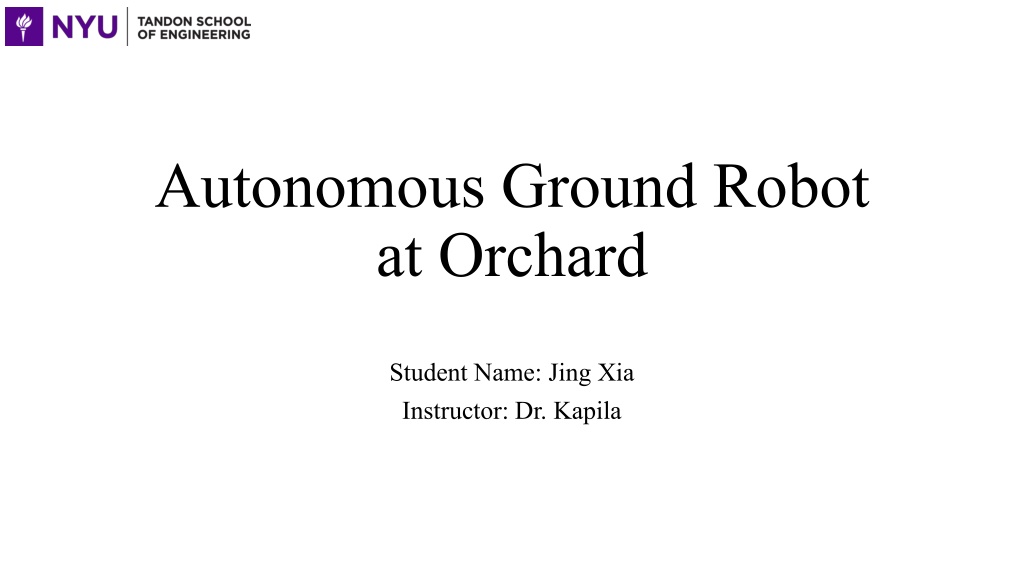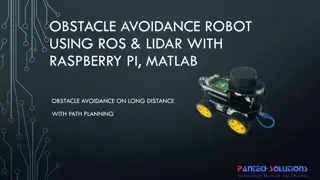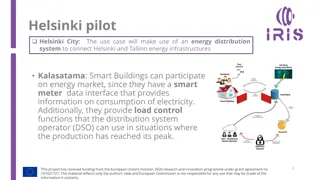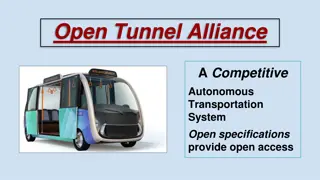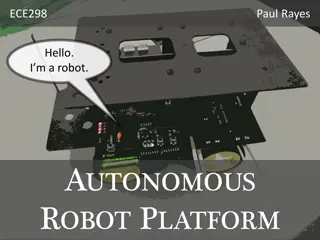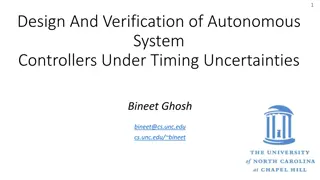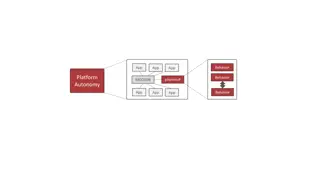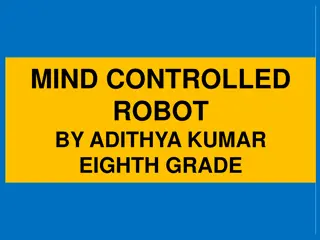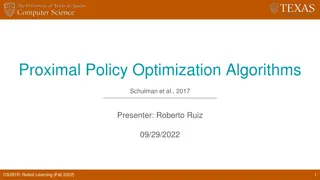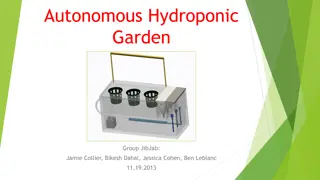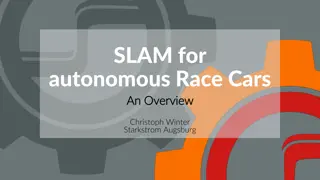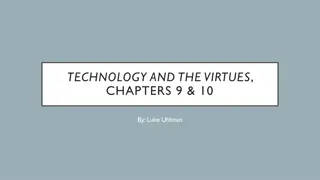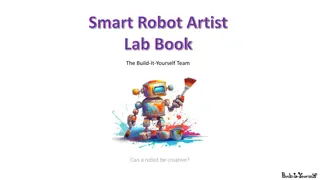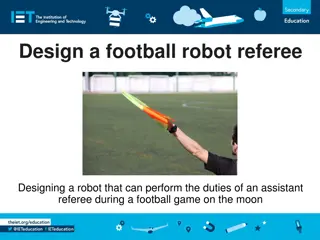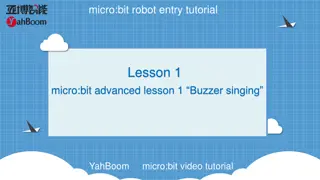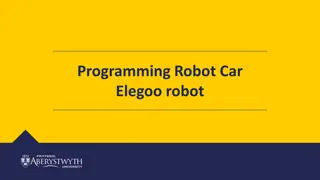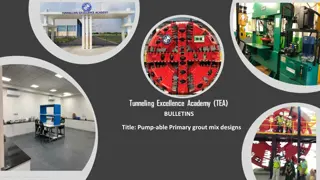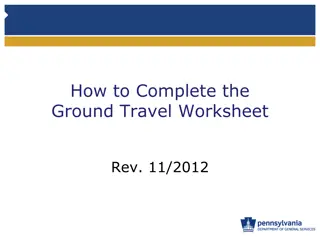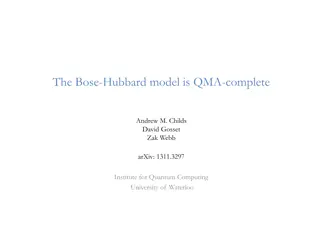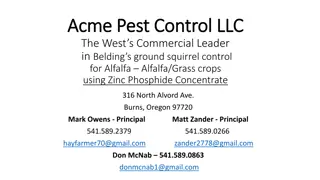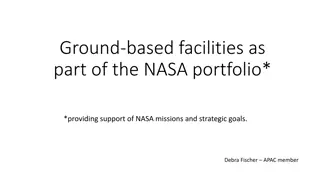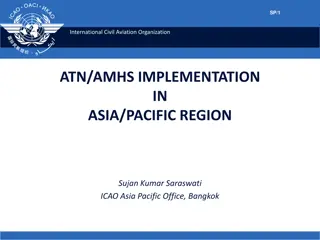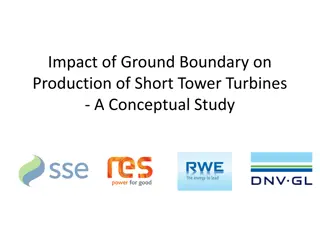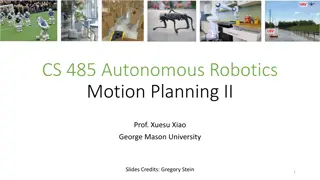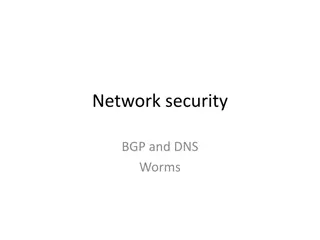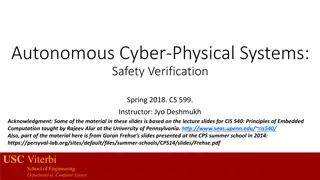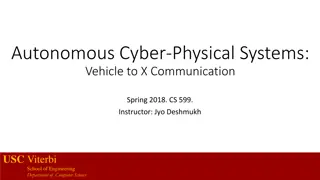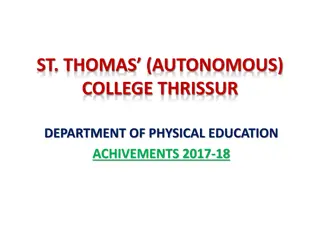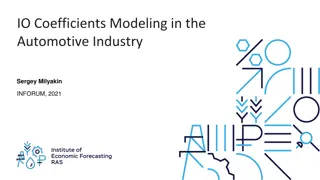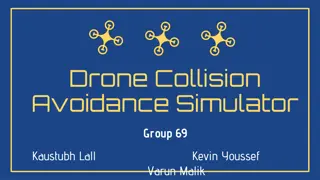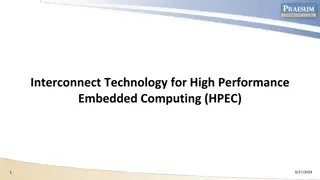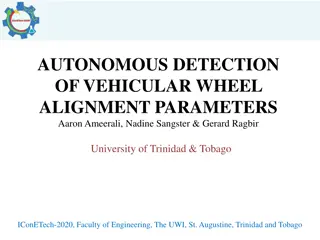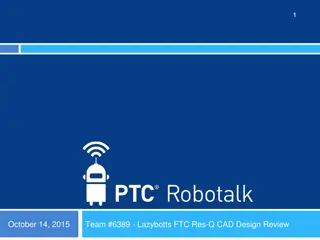Innovative Autonomous Ground Robot for Orchard Management
This project showcases an Autonomous Ground Robot designed for orchard management tasks. The robot's hardware, software design, problem identification, and objectives are outlined. Key features include YOLO-based apple counting, SLAM navigation, and soil moisture detection. The system runs on Ubuntu Linux with ROS Kinetic, employing advanced algorithms for mapping, localization, and path planning. The project aims to address challenges in agriculture robotics such as autonomy, cost, and size constraints.
Download Presentation

Please find below an Image/Link to download the presentation.
The content on the website is provided AS IS for your information and personal use only. It may not be sold, licensed, or shared on other websites without obtaining consent from the author. Download presentation by click this link. If you encounter any issues during the download, it is possible that the publisher has removed the file from their server.
E N D
Presentation Transcript
Autonomous Ground Robot at Orchard Student Name: Jing Xia Instructor: Dr. Kapila
Outline Problem identification The overview of the robot Hardware structure for the whole system Software design 1. RQT_GRAPH of navigation 2. Object detection flowchart 3. Soil moisture detection Some Testing 1. The demo 2. Lighting condition testing 3. Issue of moisture function
Problem Identification Most of the agriculture robots are not full autonomous The cost of these robots are pretty high The size of these robots are large
Objective 1. Counting number of apples by camera using YOLO 2. SLAM and navigation 3. Measure the moisture of soil
The overview of the robot Front view Side view Top view
Software design Operating System : Linux Ubuntu 16.04 Platform: ROS Kinetic Mapping: Hector SLAM Localization: Adaptive Monte Carlo localization and ICP algorithm Navigation/Path planning: Dynamic Window Approach(DWA)/A* Wheels speed control: PID Object detection system: YOLO (You only look once) Main algorithms Serial communication protocol between master(Jetson TX2) and slave(Arduino)
Lighting Condition Testing Phone flash light no no yes yes Room light no yes no yes ad npl nrl all Testing Environment Setup Images input in 4 types
From clock-wise dark/npl/nrl/all threshold = 28% Threshold = 60% Threshold = 72%
Threshold:28% Threshold:60% Threshold:72% ad 0 0 0 npl 8 5 5 nrl 5 4 4 all 5 5 4 fact 8 8 8 9 9 8 8 8 8 8 8 8 8 8 8 7 7 6 6 5 5 5 5 5 5 5 5 5 5 5 5 4 4 4 4 4 4 4 4 3 3 2 2 1 1 0 0 0 0 0 0 0 0 ad npl nrl all fact Threshold:28% Threshold:60% Threshold:72% Threshold:28% Threshold:60% Threshold:72% ad npl nrl all fact
Some experience after doing this project: 1. Build or purchase a reliable mechanical chassis(including motor/encoder/wheels) 2. Testing the move_base stack took time. It is better to understand the theory first then change the parameters. 3. Document and record the reference website/paper/bug solution every time. 4. Calm down when the robot failed.
Thank you for listening my presentation Any questions?
